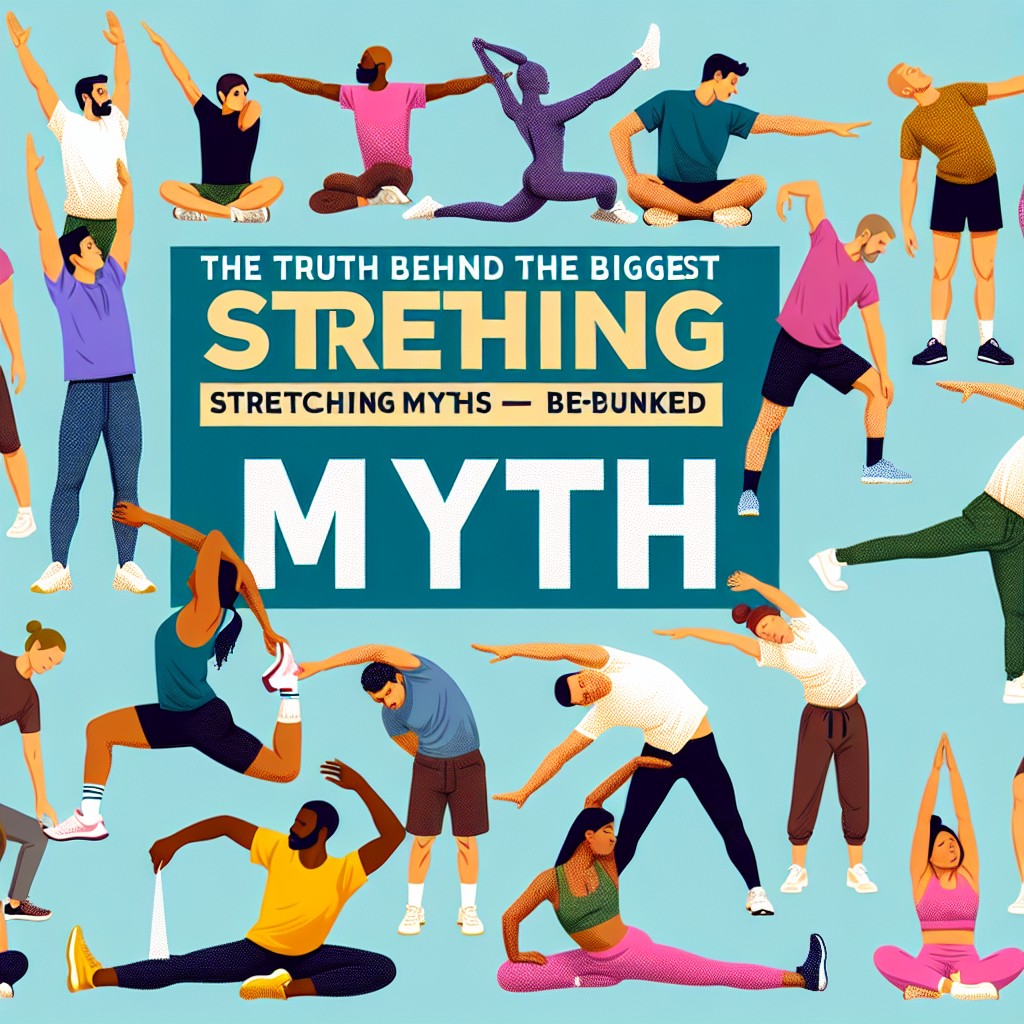Stretching has always been a popular topic in the fitness world. Whether you're an athlete, a gym-goer, or simply someone looking to improve flexibility, you've probably heard a lot of stretching advice over the years. But with so much information out there, it can be challenging to separate fact from fiction. In this article, we will debunk the 10 biggest stretching myths and shed light on the truth behind them.
Myth #1: Stretching before a workout prevents injuries
One of the most common misconceptions about stretching is that it can prevent injuries. However, recent studies have shown that static stretching, where you hold a stretch for an extended period, can actually decrease muscle strength and power. Instead, it's better to warm up with dynamic stretches, such as leg swings or arm circles, which can help increase blood flow to the muscles and prepare them for exercise.
Myth #2: You should always stretch before exercise
Contrary to popular belief, stretching before exercise isn't always necessary. If you're engaging in low-impact activities like walking or cycling, you may not need to stretch beforehand. However, if you're about to participate in a high-intensity workout or a sport that requires a wide range of motion, it's essential to include a proper warm-up routine that incorporates dynamic stretching.
Myth #3: Stretching can make you more flexible
While it's true that stretching can increase your range of motion, it won't magically transform you into a human pretzel overnight. Flexibility is a combination of genetics, joint structure, and muscle elasticity, so achieving substantial gains takes time and consistency. A well-rounded stretching routine that targets specific muscle groups and is done regularly can help you gradually improve flexibility over time.
Myth #4: No pain, no gain
The saying "no pain, no gain" certainly does not apply to stretching. Stretching should never be painful. If you feel sharp or intense pain during a stretch, you may be pushing too hard and risking injury. Stretching should be done within a comfortable range of motion, where you feel a gentle pull in the muscle. If a stretch becomes painful, ease off and reassess your technique.
Myth #5: Stretching can prevent muscle soreness
While stretching can provide temporary relief and alleviate tightness in the muscles, it does little to prevent muscle soreness after an intense workout. Delayed Onset Muscle Soreness (DOMS) is a common occurrence when you challenge your muscles beyond what they're used to. To minimize post-workout soreness, focus on proper nutrition, hydration, and gradual progression in your training regimen.
Myth #6: You should hold a stretch for at least 30 seconds
The belief that you need to hold a stretch for at least 30 seconds to gain any benefits is a persistent myth. Recent research suggests that even as little as 15 seconds of static stretching can improve flexibility. However, for optimal results, it's recommended to hold a stretch for 30 to 60 seconds, focusing on proper breathing and relaxation.
Myth #7: Stretching is only important for athletes
While athletes can benefit greatly from stretching, it is not exclusively reserved for them. Stretching is beneficial for people of all ages and fitness levels. Regular stretching can improve posture, increase blood flow, reduce muscle tension, and enhance overall mobility. Whether you're an office worker, a weekend warrior, or a senior, incorporating stretching into your routine can have numerous health benefits.
Myth #8: Stretching before bed helps you sleep better
While stretching before bed can help relax your muscles and release tension, it may not directly improve your sleep. However, combining stretching with a bedtime routine that promotes relaxation, such as deep breathing or meditation, can create a more conducive environment for quality sleep. Each person is different, so it's crucial to find a routine that works best for you.
Myth #9: Stretching can prevent muscle imbalances
Stretching alone may not be sufficient to prevent muscle imbalances. While stretching can help lengthen tight muscles, it's equally important to strengthen weak muscles that contribute to imbalances. A well-rounded exercise program that combines stretching and strength training is essential for addressing muscle imbalances and promoting overall muscular symmetry.
Myth #10: Anyone can do the splits with enough stretching
The ability to do the splits is often seen as a pinnacle of flexibility. However, not everyone's anatomy allows for it, regardless of how much they stretch. The structure of your hip joints, muscle length, and previous injuries are some factors that determine your ability to do the splits. Don't feel discouraged if you can't achieve this advanced stretch. Focus on improving your overall flexibility and mobility instead.
In conclusion, stretching is a valuable practice that can enhance flexibility, mobility, and overall well-being. By debunking these common stretching myths, we hope to provide you with a better understanding of how to incorporate stretching into your fitness routine effectively. Remember to always listen to your body, consult with a professional if needed, and stay consistent with your stretching efforts to achieve optimal results. Happy stretching!

Published on November 7, 2023
The Truth Behind the 10 Biggest Stretching Myths - Debunked
Share This Article
More Articles You Might Like
Discover More Content
Explore our collection of articles across various topics and categories. From cutting-edge technology insights to wellness wisdom, we curate the best stories to expand your horizons.
Article ID: 63